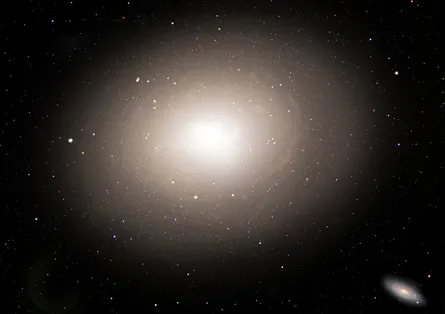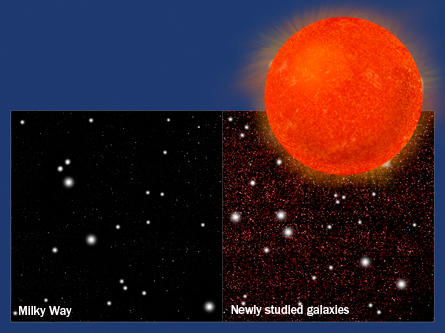There are more dim bulbs in the universe than even the most hardened pessimist might have imagined.


Astronomers who examined eight relatively nearby galaxies have found evidence of a surprisingly high abundance of faint, low-mass stars — each has about 10 times as many as the Milky Way. Those elderly galaxies are so chock-full of faint stars that the researchers extrapolate that the heavens contain up to three times the total number of stars previously estimated.
The profusion of stars also suggests that the early history of the cosmos may need a rewrite, perhaps doubling previous estimates of the total mass of stars in many of the universe’s first, massive galaxies. If so, those early galaxies would have forged stars at a much more prodigious rate, says Pieter van Dokkum of Yale University. He and Charlie Conroy of the Harvard-Smithsonian Center for Astrophysics in Cambridge, Mass., describe their study in a paper appearing online in Nature on December 1.
Van Dokkum and Conroy set out to determine whether spiral galaxies like the Milky Way have a different mix of low-mass and high-mass stars than is found in elliptical galaxies, which tend to have an older stellar population. Such differences had long been suspected but never proven.
Because even the sharpest telescopes can’t resolve individual faint stars in galaxies millions of light-years beyond the Milky Way, the team examined light from the central portion of each of eight massive elliptical galaxies — four in the Coma cluster and four in the Virgo cluster. Such galaxies are thought to account for one-third of the stellar mass in the universe. Massive galaxies that existed during the first billion or so years of cosmic history are believed to be the early ancestors of these ellipticals.
Spectra of light from the galaxies revealed two chemical fingerprints, absorption by sodium atoms and by iron hydride, which are unusually strong in faint red dwarf stars that have less than one-third the sun’s mass. The strength of the absorption features indicates that red dwarfs account for 80 percent of the number of stars in elliptical galaxies and 60 percent of the total stellar mass in those galaxies.
“Extrapolating from the central regions of these eight galaxies to the entire universe is somewhat hazardous, but if the galaxies are typical examples of their class it may well lead to a tripling” of the total number of stars in the cosmos, van Dokkum says.
The number of stars in the universe is highly uncertain, but astronomers have previously put the total at about 100 billion trillion, or 1023.
One caveat, says Richard Ellis of Caltech, is that the researchers assumed that red dwarfs in the elliptical galaxies have the same chemical composition as red dwarfs in the Milky Way. It’s possible, he notes, that the strong absorption signals don’t indicate a very large population of the dwarfs. Instead, those measurements might be explained by a smaller population of red dwarfs that happen to be richer in sodium and iron hydride than red dwarfs in the Milky Way.
Nonetheless, the study provides “the most convincing observational test” that the mix of stars — heavyweights and lightweights — varies dramatically from one type of galaxy to another, says Ellis. Instead of using the assortment of high- and low-mass stars in the Milky Way as a standard template, such differences need to be taken into account when astronomers estimate the stellar mass and star-formation rates of galaxies from the early universe, van Dokkum and Conroy note.







